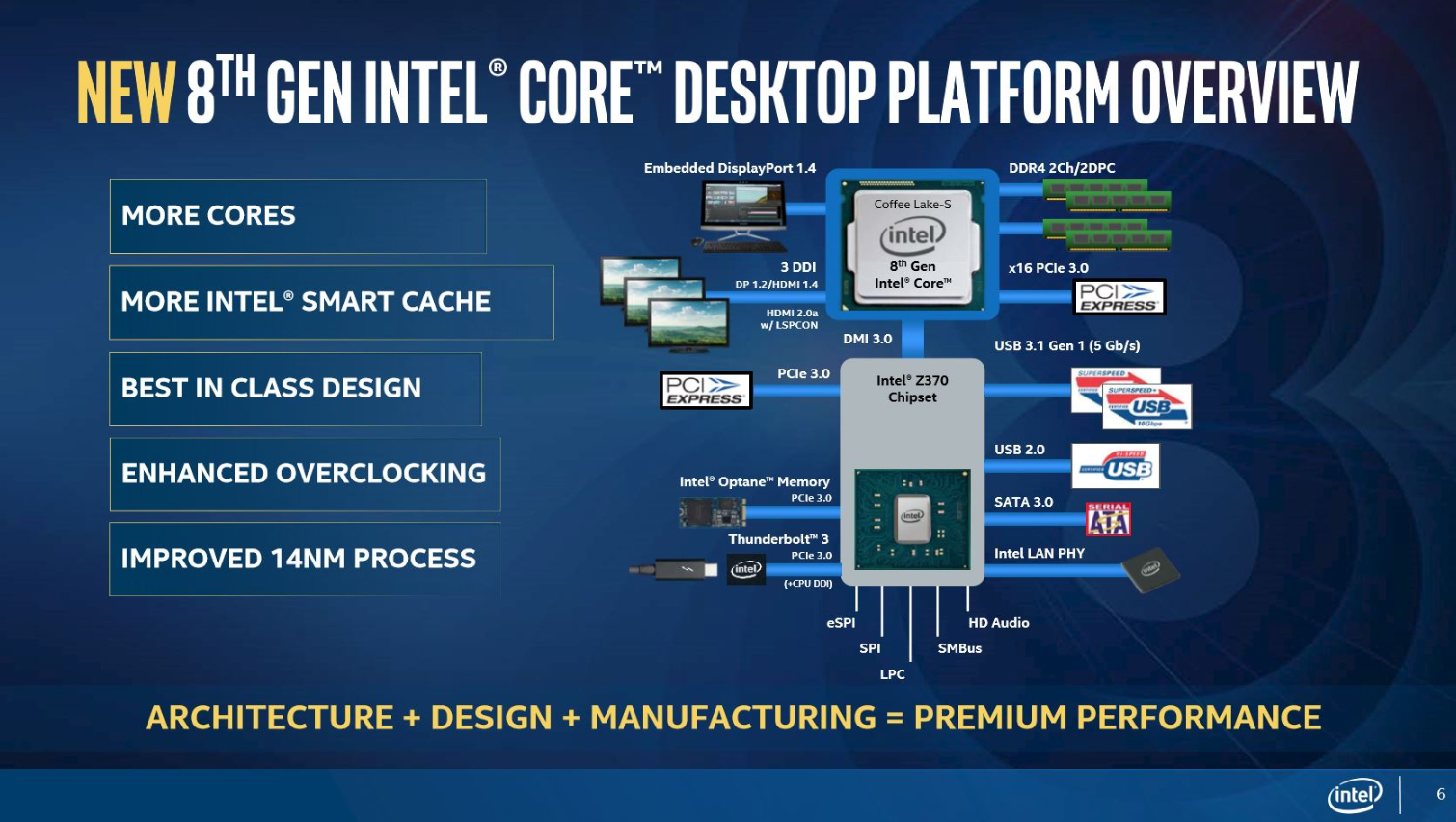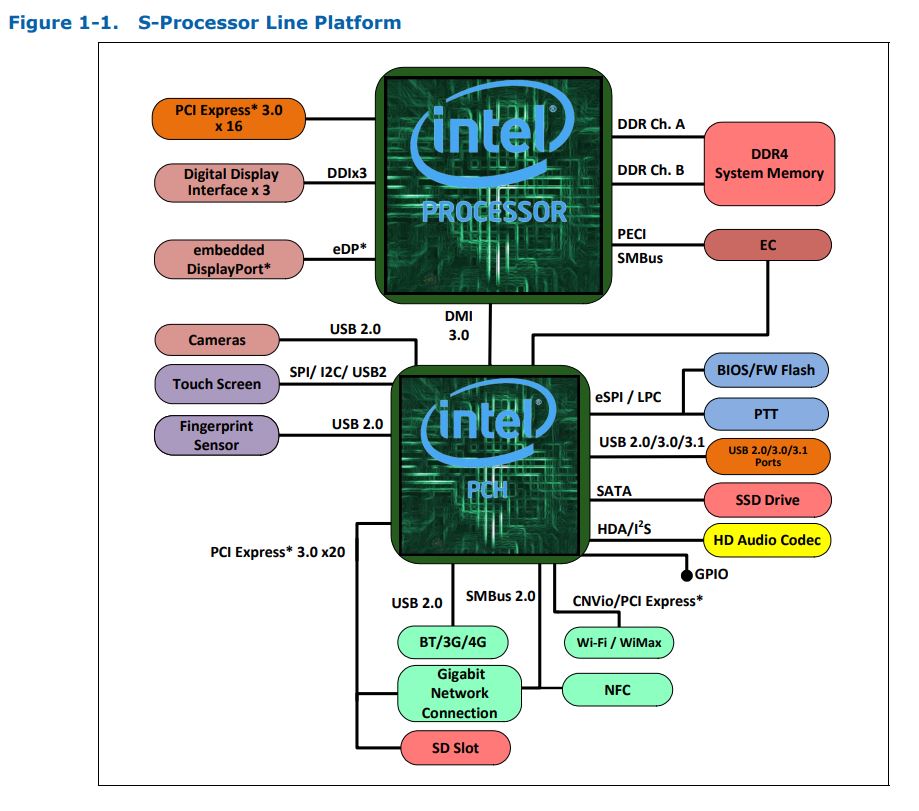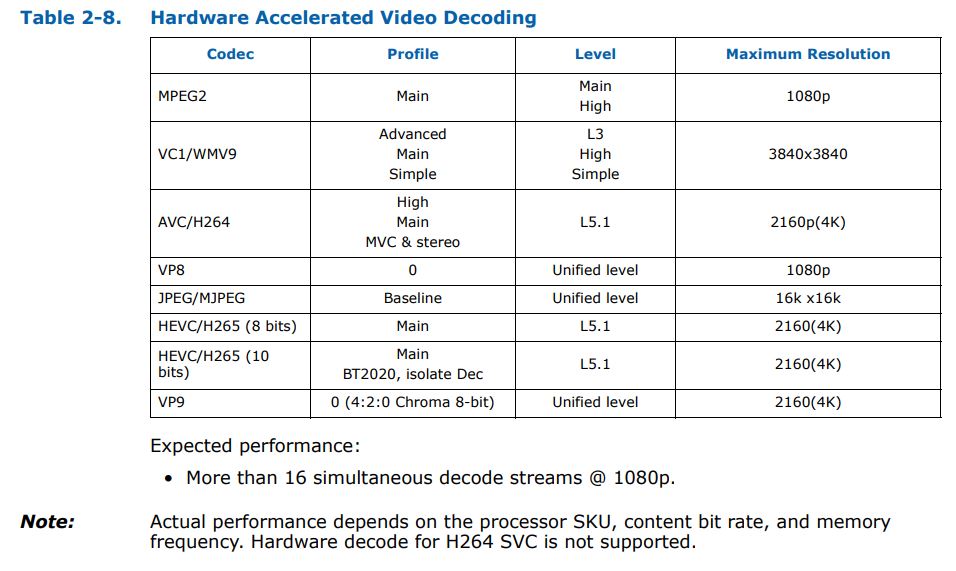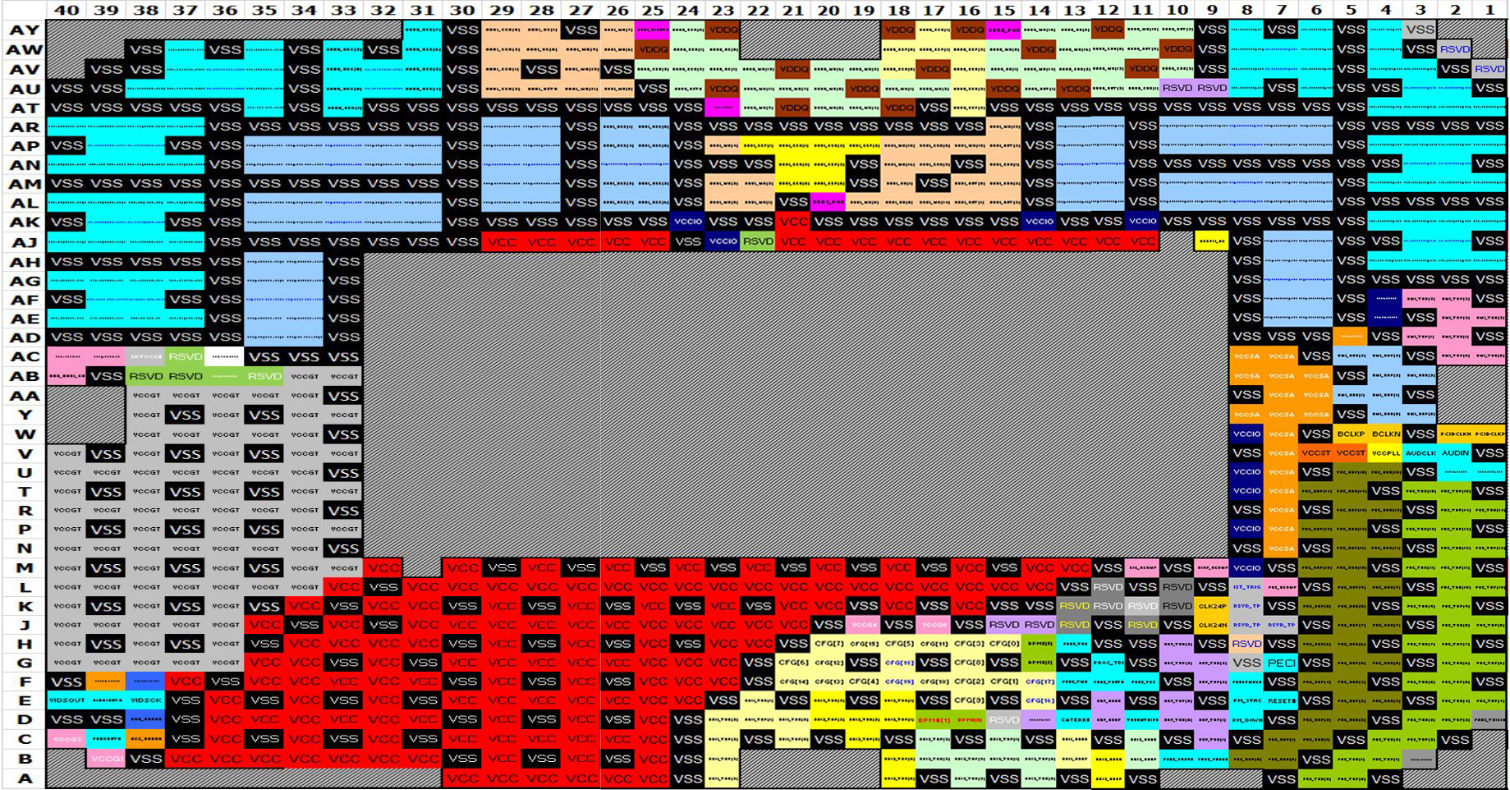Core i7-8700K Review: Coffee Lake Brews A Great Gaming CPU
Why you can trust Tom's Hardware
The Z370 Chipset & Graphics
The Z370 Chipset
Much to the dismay of enthusiasts everywhere, you can't buy a Coffee Lake-based CPU and drop it into the fancy Z270 motherboard you may have purchased a few months ago. Instead, you'll have to pony up for a 300-series motherboard. You also can't bring your Skylake or Kaby Lake processor over to a Z370-based platform, even though both sides employ LGA 1151 interfaces.
Intel makes more money selling CPUs than chipsets, so creating an upgrade path would have made sense. But the company tells us that it needed optimized memory trace routing to support DDR4-2666, and it also improved power delivery to support six-core models. It also beefed up package power delivery for overclocking.
According to Intel's specification sheet, the increased package power delivery consists of 18 pins repurposed to VCC (previously designated as reserve pins). There are also changes to the socket that reassign behaviors to some pins, such as swapping Normal Open (NO) and Normal Closed (NC) settings. Intel also improved power delivery to the graphics engine, and although the specific changes there remain undefined, that might improve HD Graphics overclocking.
The changes mean upgrading to Z370 is a technical necessity, rather than planned obsolescence. Regardless, though, AMD's planned support for Socket AM4 through 2020 makes Intel's Z370 chipset requirement appear all the more painful.


CPU-based I/O remains unchanged from Kaby Lake; you still get 16 lanes of PCIe 3.0. Again, though, the whole platform supports up to 40 lanes. The extra 24 originate from the PCH, stuck behind a four-lane DMI 3.0 connection that links the core logic and CPU. As you might imagine, this PCIe-like interconnect can become a bottleneck if enough devices (like M.2 SSDs) are working behind it.
The 22nm Z370 chipset is rated at 6W, and is mostly identical to Z270. It offers up to 10 USB 2.0, 14 USB 3.0, and six SATA 6Gb/s ports. Intel added support for Thunderbolt 3, but hasn't provided much detail on the implementation. Z370 also retains support for Intel Optane Memory. Even the ME version 11 is listed similarly on Intel's ARK, though we do know that Z370's Management Engine doesn't allow Kaby Lake processors to boot on the platform. Two memory channels support up to two DIMMs per channel and a maximum of 64GB. Intel does not support ECC on any of its models (compared to AMD, which does allow motherboard vendors to enable ECC support).
Intel offers a few unique benefits to enthusiasts, such as the XTU (Extreme Tuning Utility) and support for XMP 2.0. The Performance Tuning Protection Plan is also available, which covers damage from overclocking. The price for the warranty plan varies per SKU, and Intel hasn't provided a detailed breakdown for Coffee Lake yet. We aren't aware of any AMD-equivalent coverage.
Get Tom's Hardware's best news and in-depth reviews, straight to your inbox.
Intel UHD Graphics 630
Intel will have an optimized graphics driver soon after launch, but we don't see any significant improvements (beyond HDCP 2.2 support for DP 1.2a) to the Gen 9 LP (Low Power) engine. We still get subslices with eight EUs each (totaling 24 EUs in a GT2 configuration), accelerated slightly by a 50 MHz maximum frequency increase across the board.


The biggest change comes from Intel's marketing department, which "upgraded" the High Definition (HD) Graphics 630 brand to Ultra High Definition (UHD) Graphics 630. Apparently, that means the company supports the same legacy VP8 and AVC codecs, HEVC 10-bit decode/encode, VP9 8/10-bit decode, VP9 8-bit encode (no support for VP9 10-bit encode), HDR, and Wide Color Gamut features. The processors now come in 6+2 (i5 and i7) and 4+2 (i3) configurations.
MORE: Best CPUs
MORE: Intel & AMD Processor Hierarchy
MORE: All CPUs Content

Paul Alcorn is the Editor-in-Chief for Tom's Hardware US. He also writes news and reviews on CPUs, storage, and enterprise hardware.
-
cknobman Looks like it might be time for AMD to lower prices.Reply
AMD really has shaken Intel up, never would I have dreamed (before this year) I'd see Intels best gaming cpu (especially a K model) release at $360. -
AgentLozen AMD's price per core is still very strong. It struggles in gaming at 1080p but Tomshardware didn't provide data in 1440p or 4K.Reply
I'm not yet convinced that AMD is in trouble. -
saunupe1911 Hmmm is it worth a skylake 6700K that's stable at 4.6 Overclock to upgrade? Probably not. I wouldn't mind 6 cores though. I wonder how many will hit 5.0!Reply -
jroc188 8700k is $480ca got the R5 1600 for $255ca and mobo for $120ca. $375 all together and more then happy with the gaming results. But the 8700k dose look sweet on the benchmarks. AMD with a price drop will still sell wellReply -
shrapnel_indie ReplyOf course, while Intel's accelerated Coffee Lake-S launch makes it look today's unveiling is a direct response to heated competition, in reality, the long incubation period for new processors means it’s more likely the result of 10nm manufacturing delays.
Ummm... Yeah, the design may have been kicking around, and ready to go before Ryzen, but when it is released months earlier than scheduled.... Saying that it wasn't a response to Ryzen seems more like misinformation more than pure fact. Yeah, I don't doubt 10nm manufacturing delays played a part in the previous release date, but Ryzen forced its release a little earlier than planned. -
bloodroses To AMD fanbois who claimed that Intel was toast and couldn't respond to Ryzen's release, here's Intel's Mic drop. *thud*Reply
For the rest of us consumers, this is great news for continued strong competition at reduced prices from both companies. :) -
massacre.h4te Nearly 90 degrees Celsius when overclocked gaming on an AiO. Prettttttty toasty!Reply -
saunupe1911 Reply20241606 said:To AMD fanbois who claimed that Intel was toast and couldn't respond to Ryzen's release, here's Intel's Mic drop. *thud*
For the rest of us consumers, this is great news for continued strong competition at reduced prices from both companies. :)
Z370 motherboards are expensive though...sheesh. And you gotta reach out to liquid cooling companies for attachments for mounting to this socket. Canon Lake may be out before you can get everything situated for a nice 8700k upgrade lmao. -
FormatC Reply
The reason is simple:20241615 said:Nearly 90 degrees Celsius when overclocked gaming on an AiO. Prettttttty toasty!
The built-in frying fat between IHS and die :) -
LilDog1291 Reply20241606 said:To AMD fanbois who claimed that Intel was toast and couldn't respond to Ryzen's release, here's Intel's Mic drop. *thud*
For the rest of us consumers, this is great news for continued strong competition at reduced prices from both companies. :)
I don't know if I would call 90C+ on a chiller cooler (granted its a high overclock but the 7700k had the same problem) a mic drop but it is definitely a step in the right direction. If they can get their temperatures under control in the next generation they will win my vote back.
